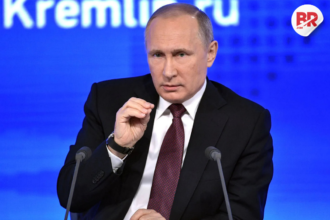
Just days after one of the strongest earthquakes in recent history hit the region, a volcano in eastern Russia has erupted for the first time in nearly five centuries.
The Krasheninnikov volcano, located in the Kamchatka Peninsula, had been quiet since 1550. But after the powerful 8.8 magnitude earthquake, the volcano suddenly erupted, shooting a huge cloud of ash into the sky.

Read more: Russia’s 8.8 Quake Sparks Pacific Tsunami Warnings; Hawaii on High Alert
According to Russian emergency officials, the ash plume reached about 6,000 meters (nearly 20,000 feet) and is moving toward the Pacific Ocean. Fortunately, no towns or cities are in its path, and no ash has fallen in areas where people live.
WATCH: Incredible footage of the FIRST RECORDED ERUPTION of Krasheninnikov volcano in Kamchatka, Russia.
It wouldn’t be a surprise to me if it was triggered by the megathrust M8.8 earthquake a few days ago.
Krasheninnikov volcano began its FIRST RECORDED eruption at 16:50 UTC… pic.twitter.com/FpUKRo9dLG
— Volcaholic 🌋 (@volcaholic1) August 3, 2025
Because of the eruption, the volcano has been given an “orange” aviation alert, which means air travel in the area may be affected.
This eruption happened shortly after another nearby volcano, Klyuchevskoy—the tallest active volcano in both Europe and Asia—also erupted. Scientists say Klyuchevskoy has erupted at least 18 times since 2000, so it’s more active than Krasheninnikov.
Powerful Earthquake Behind the Eruptions
These eruptions came after a massive 8.8 earthquake shook the region near Petropavlovsk-Kamchatsky, a city in eastern Russia. The quake caused tsunami warnings across the Pacific, from Japan to Hawaii to Ecuador.
The strongest impact was in Russia, where a tsunami flooded a fishing plant in the port town of Severo-Kurilsk.
Experts believe the earthquake and volcanic eruptions are linked. The Kamchatka Peninsula sits along the Pacific Ring of Fire, a zone known for frequent earthquakes and volcanic activity. The Pacific tectonic plate is slowly pushing under the Russian landmass, which causes pressure to build up—eventually leading to quakes and eruptions.
Scientists warn that more aftershocks could happen, and people in the region should stay alert.
This earthquake is the strongest in the area since the 2011 Japan quake, which triggered a deadly tsunami and caused a nuclear disaster at the Fukushima Daiichi plant.












